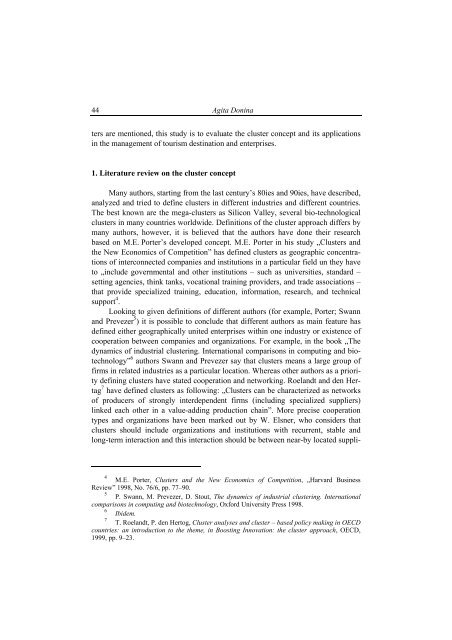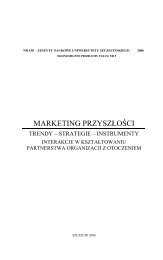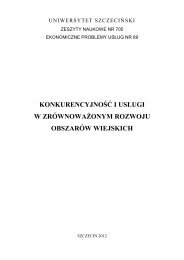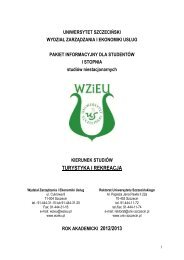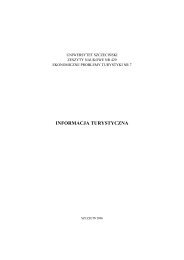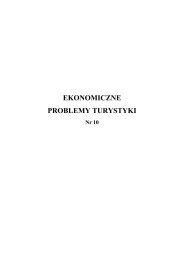Zeszyt naukowy - caÅoÅÄ - WydziaÅ ZarzÄ dzania i Ekonomiki UsÅug
Zeszyt naukowy - caÅoÅÄ - WydziaÅ ZarzÄ dzania i Ekonomiki UsÅug
Zeszyt naukowy - caÅoÅÄ - WydziaÅ ZarzÄ dzania i Ekonomiki UsÅug
You also want an ePaper? Increase the reach of your titles
YUMPU automatically turns print PDFs into web optimized ePapers that Google loves.
44<br />
Agita Donina<br />
ters are mentioned, this study is to evaluate the cluster concept and its applications<br />
in the management of tourism destination and enterprises.<br />
1. Literature review on the cluster concept<br />
Many authors, starting from the last century’s 80ies and 90ies, have described,<br />
analyzed and tried to define clusters in different industries and different countries.<br />
The best known are the mega-clusters as Silicon Valley, several bio-technological<br />
clusters in many countries worldwide. Definitions of the cluster approach differs by<br />
many authors, however, it is believed that the authors have done their research<br />
based on M.E. Porter’s developed concept. M.E. Porter in his study „Clusters and<br />
the New Economics of Competition” has defined clusters as geographic concentrations<br />
of interconnected companies and institutions in a particular field un they have<br />
to „include governmental and other institutions – such as universities, standard –<br />
setting agencies, think tanks, vocational training providers, and trade associations –<br />
that provide specialized training, education, information, research, and technical<br />
support 4 .<br />
Looking to given definitions of different authors (for example, Porter; Swann<br />
and Prevezer 5 ) it is possible to conclude that different authors as main feature has<br />
defined either geographically united enterprises within one industry or existence of<br />
cooperation between companies and organizations. For example, in the book „The<br />
dynamics of industrial clustering. International comparisons in computing and biotechnology”<br />
6 authors Swann and Prevezer say that clusters means a large group of<br />
firms in related industries as a particular location. Whereas other authors as a priority<br />
defining clusters have stated cooperation and networking. Roelandt and den Hertag<br />
7 have defined clusters as following: „Clusters can be characterized as networks<br />
of producers of strongly interdependent firms (including specialized suppliers)<br />
linked each other in a value-adding production chain”. More precise cooperation<br />
types and organizations have been marked out by W. Elsner, who considers that<br />
clusters should include organizations and institutions with recurrent, stable and<br />
long-term interaction and this interaction should be between near-by located suppli-<br />
4<br />
M.E. Porter, Clusters and the New Economics of Competition, „Harvard Business<br />
Review” 1998, No. 76/6, pp. 77–90.<br />
5<br />
P. Swann, M. Prevezer, D. Stout, The dynamics of industrial clustering. International<br />
comparisons in computing and biotechnology, Oxford University Press 1998.<br />
6<br />
Ibidem.<br />
7<br />
T. Roelandt, P. den Hertog, Cluster analyses and cluster – based policy making in OECD<br />
countries: an introduction to the theme, in Boosting Innovation: the cluster approach, OECD,<br />
1999, pp. 9–23.


